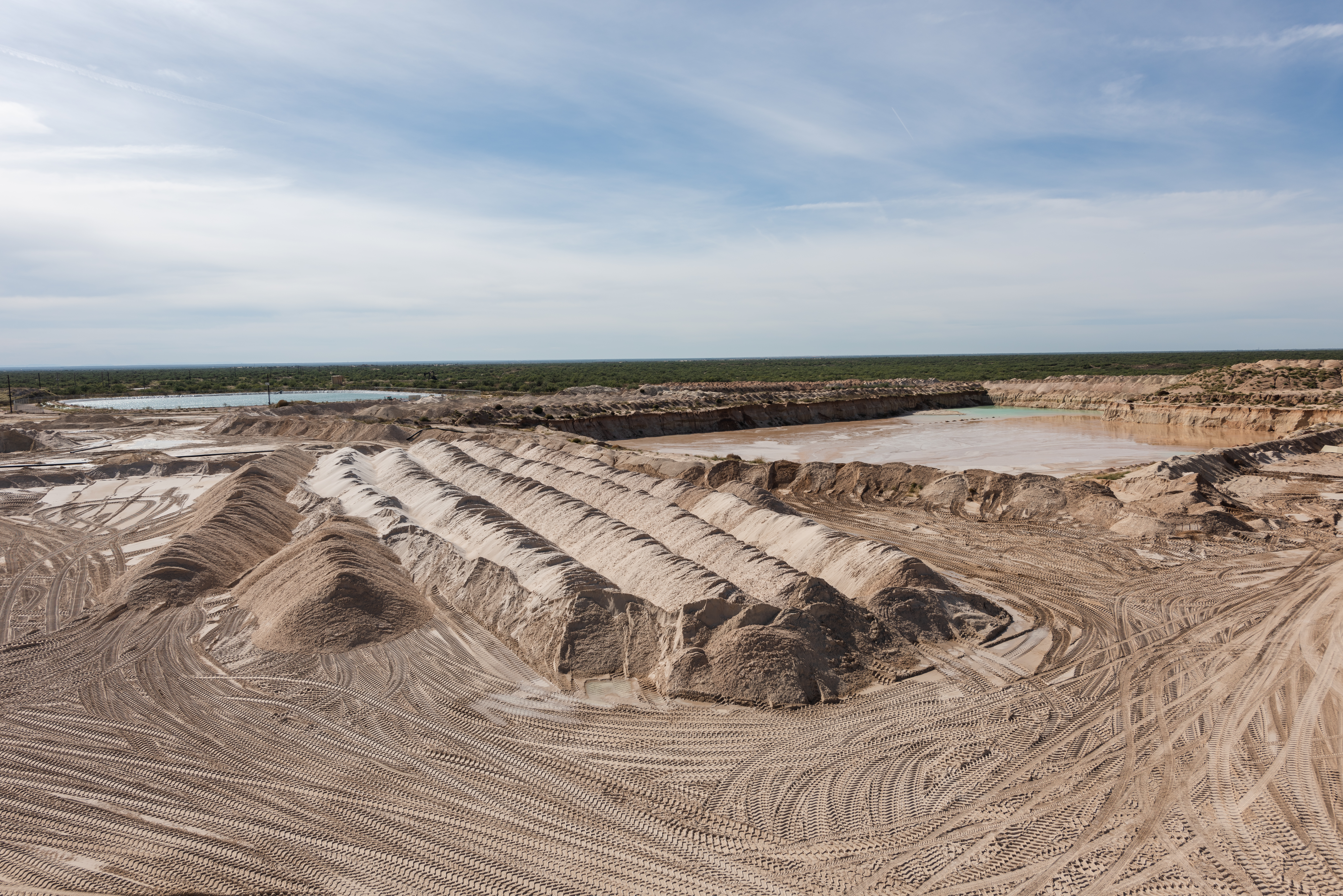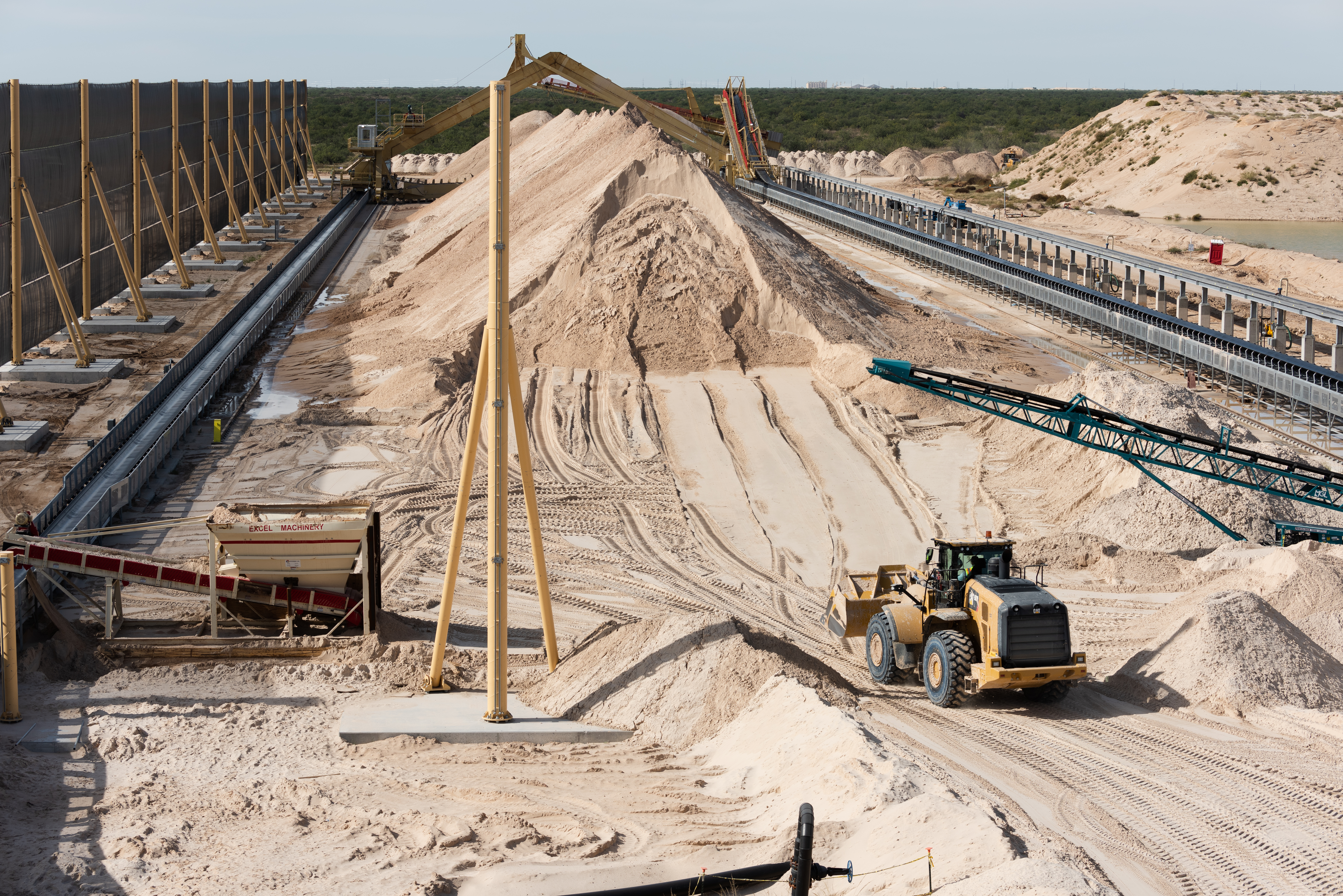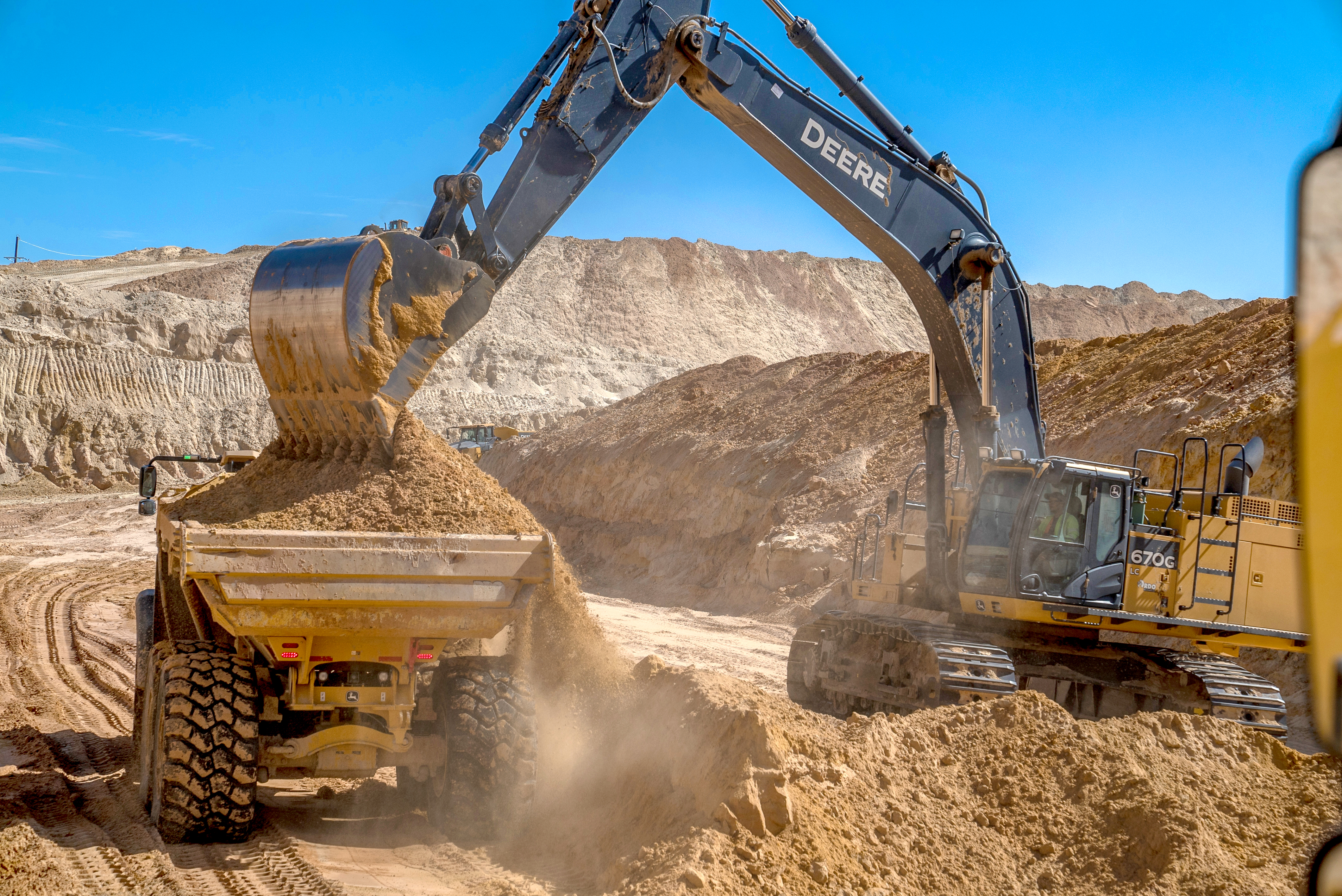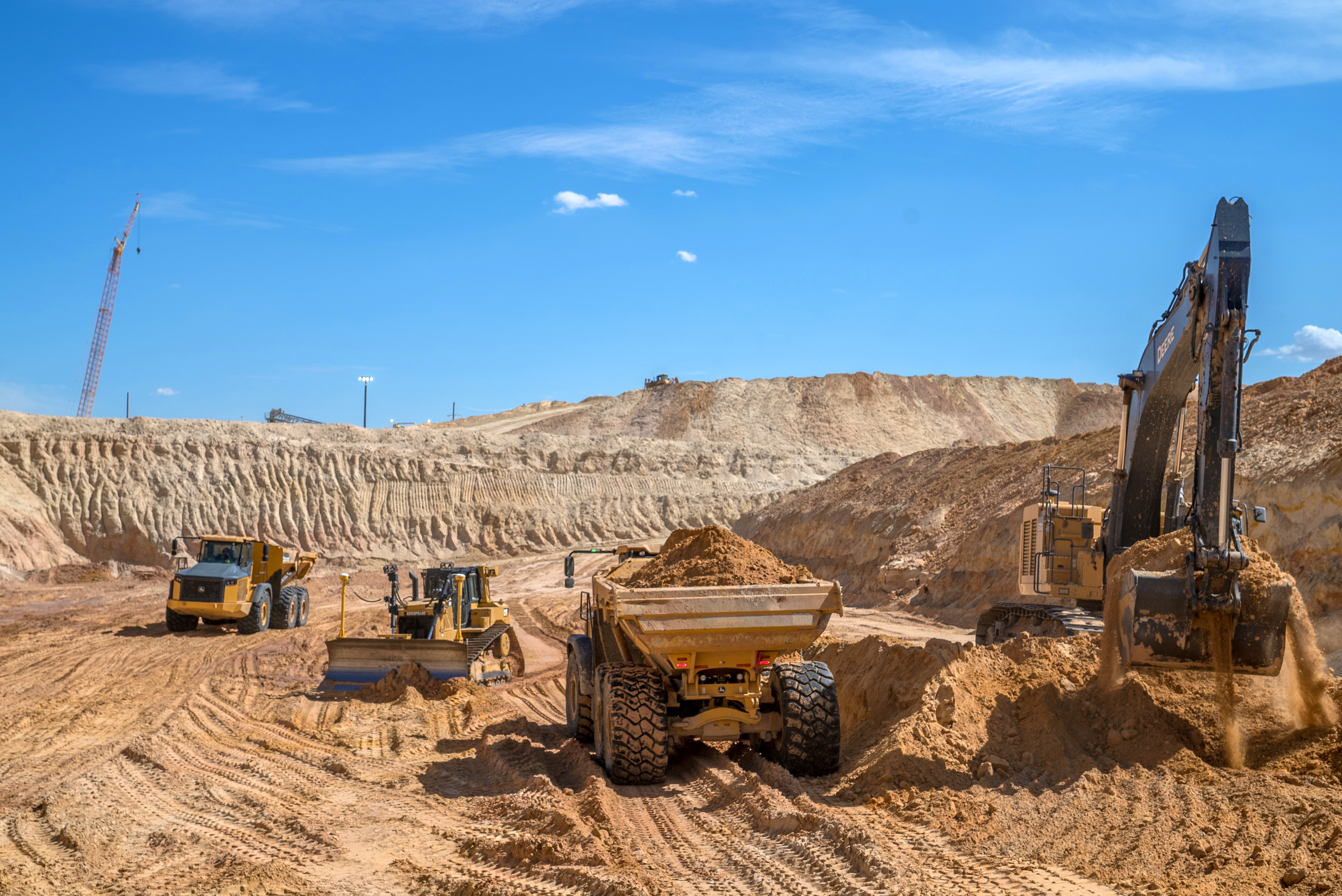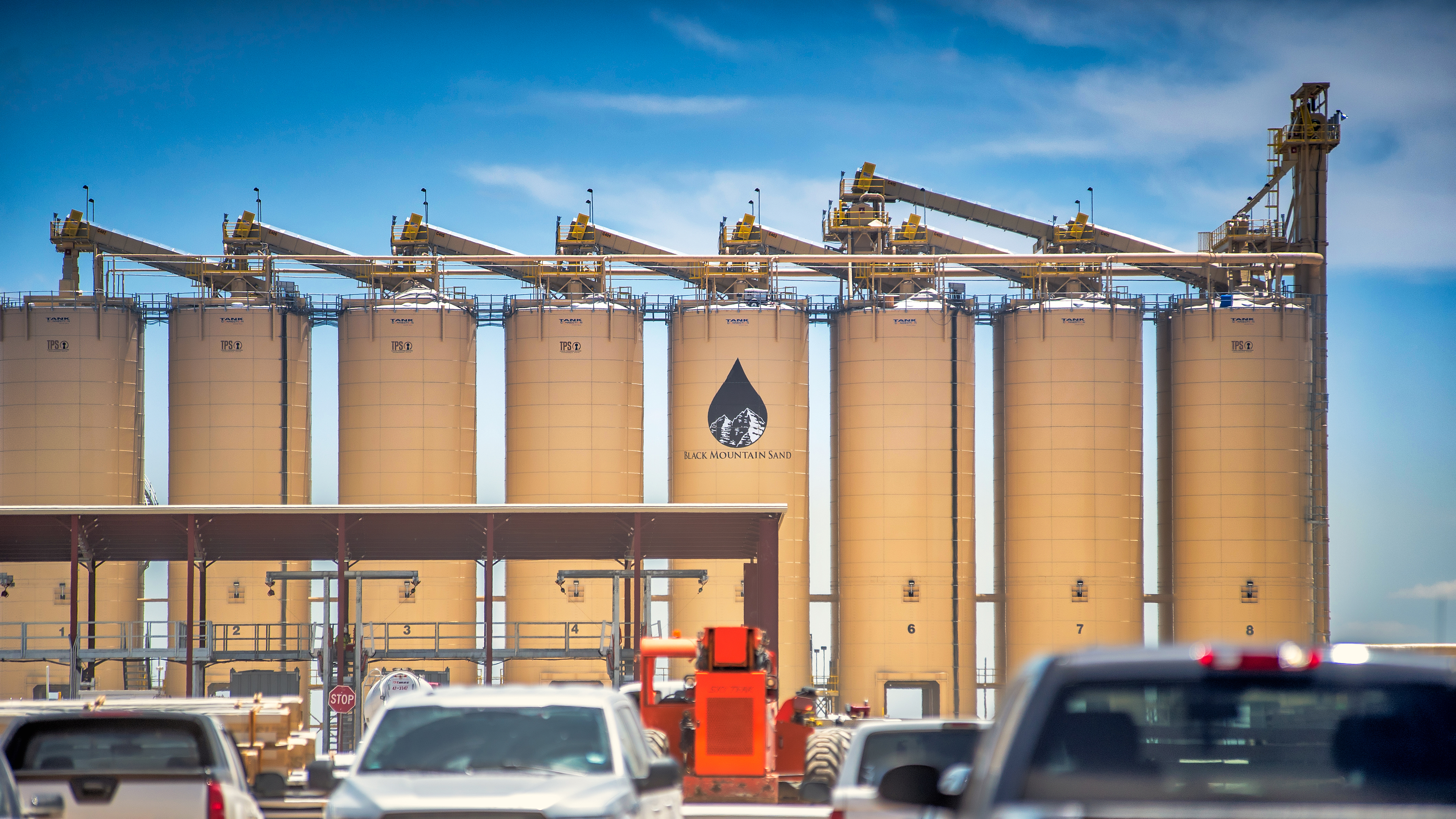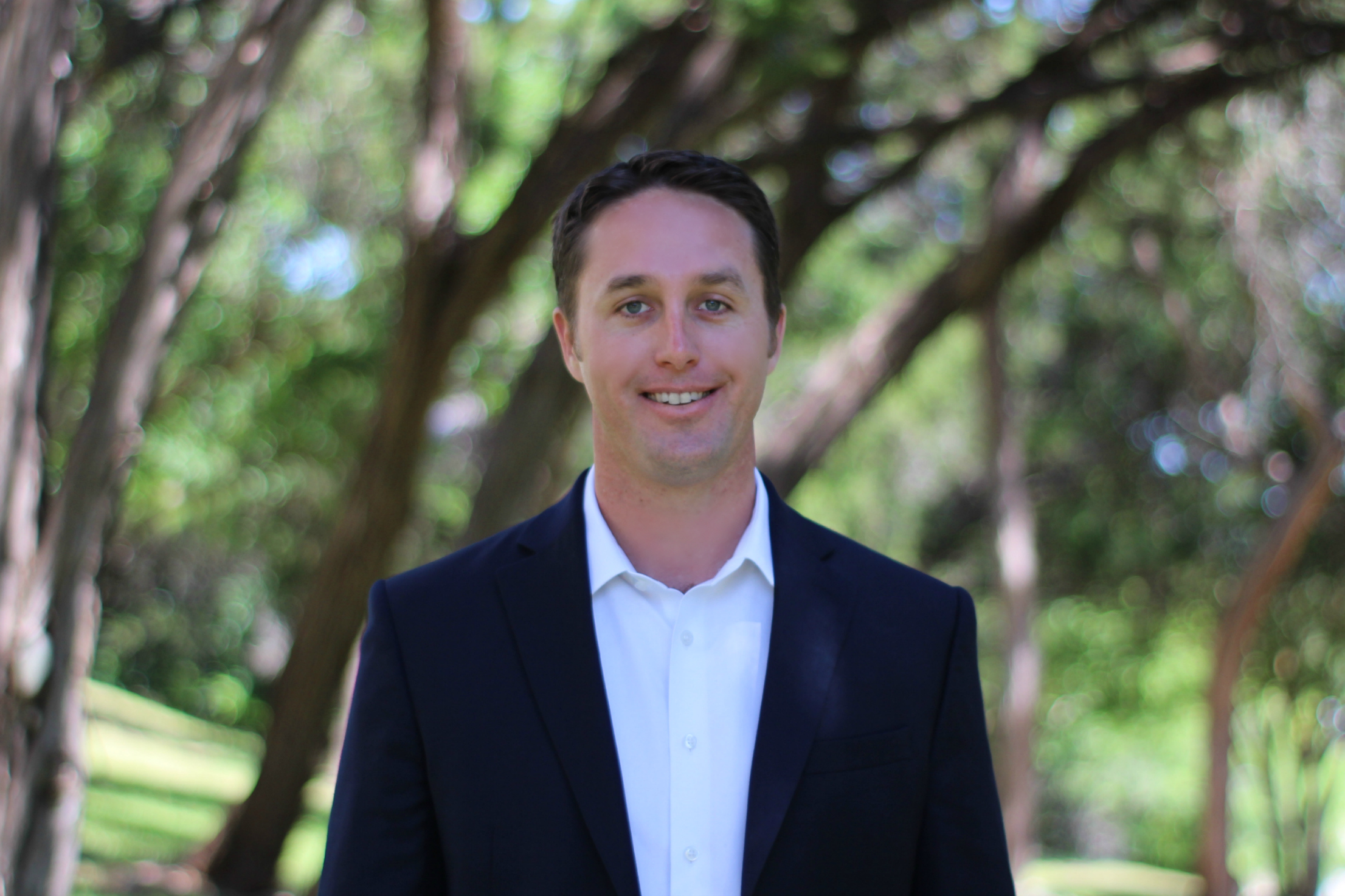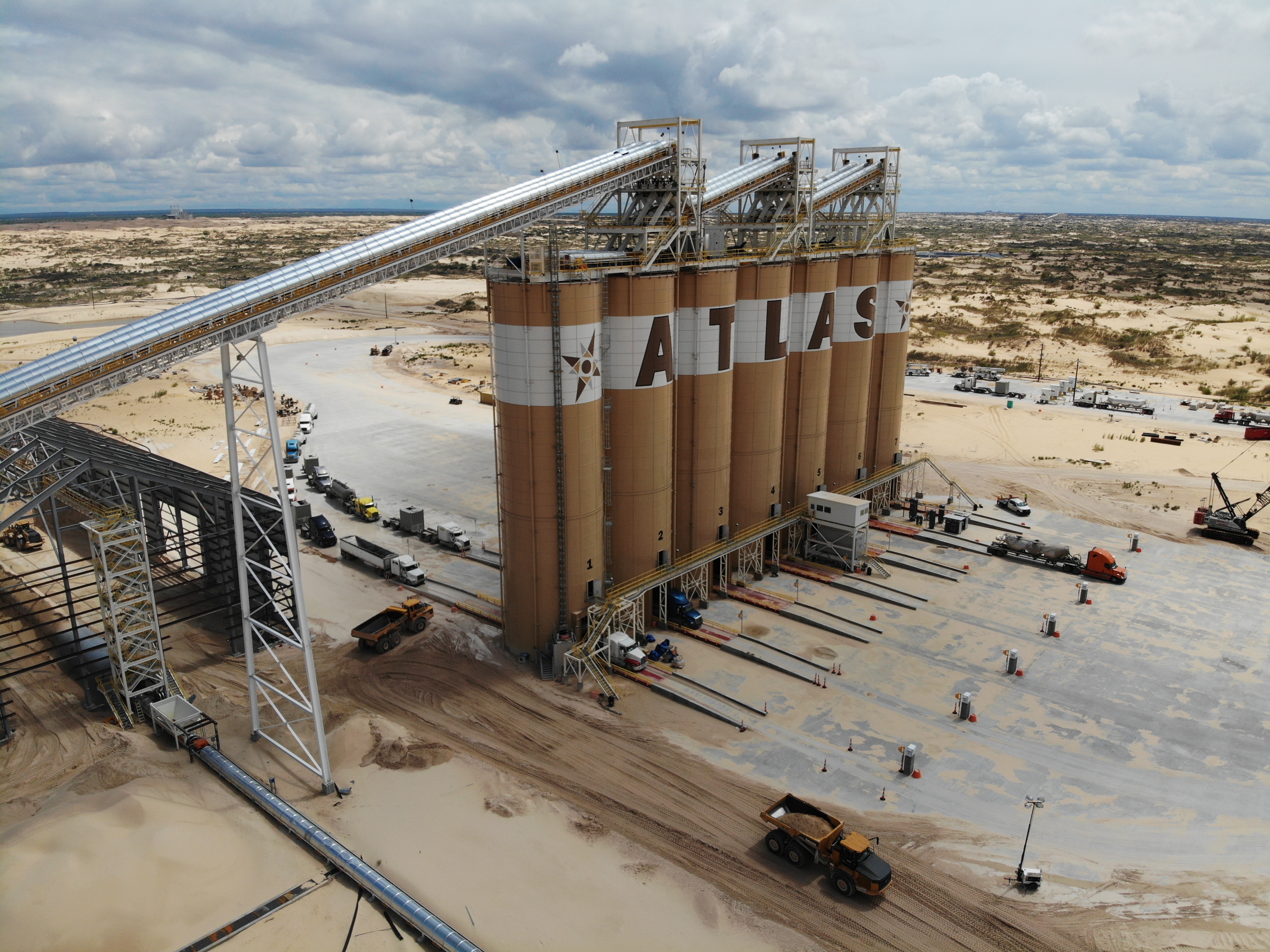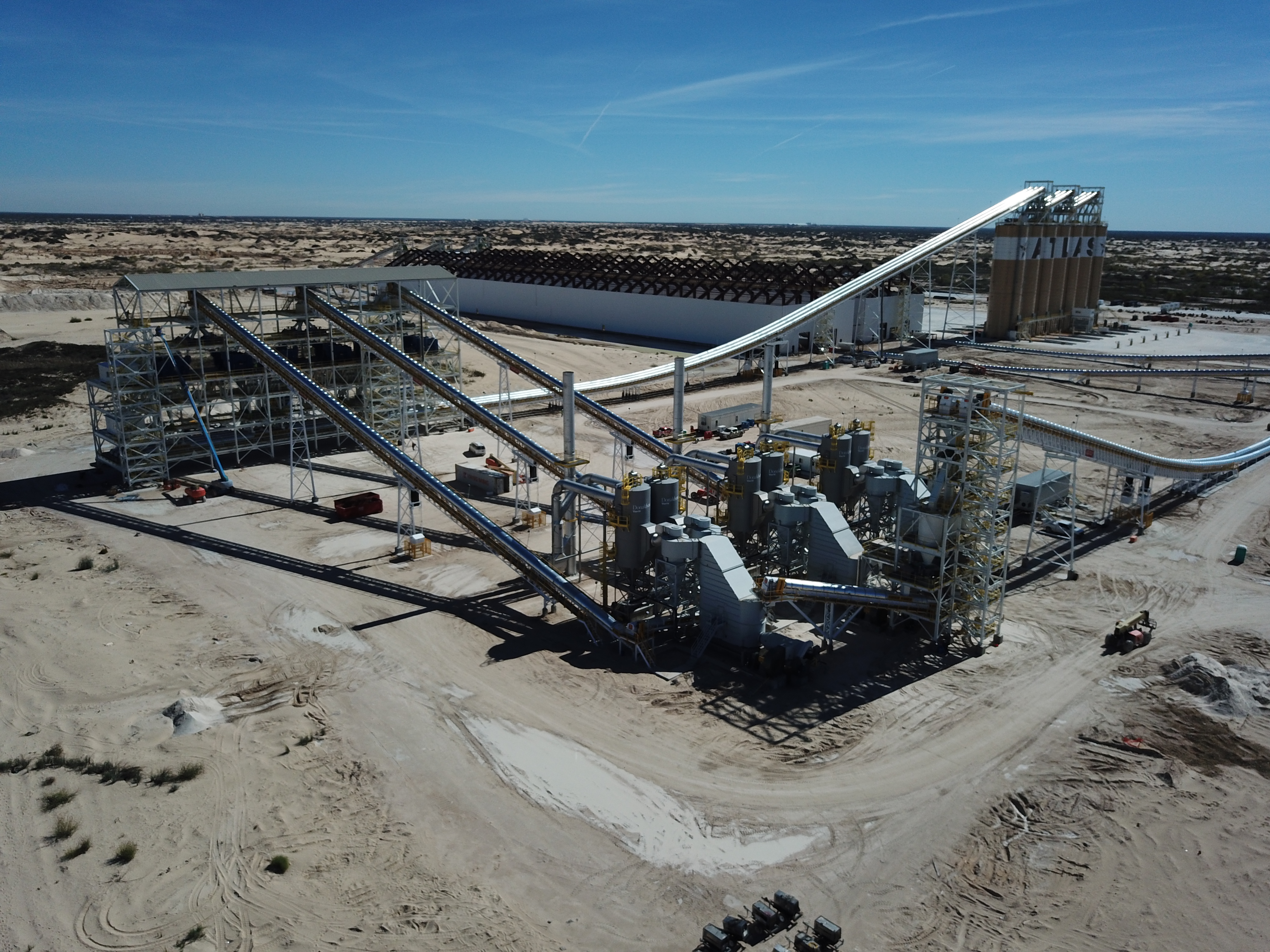In less than 10 years, frac sand sourcing has migrated from Wisconsin/Illinois to Brady to local basins, and cut fracturing costs by millions in the process. Meanwhile, expect another sand boom.
By Paul Wiseman
While hydraulic fracturing traces its roots as far back as 1947 with Stanolind Oil and Gas engineer Floyd Farris’s unsuccessful trial, and George Mitchell’s revival of the process in the 1990s, the big boom in shale frac’ing began around 2008. That is also the origin of the frac sand sub-industry.
At first, most sand came from mines in Wisconsin and Illinois, home of “Northern White,” a hard (high crush), large mesh sand that was considered the only game in town at the time.
Fast forward to 2018-19 and significantly fewer producers are using Northern White now. Those sands have shifted to the point that just the year 2018 saw the opening of 19 frac sand mines right at home in the Permian Basin—and many others near producing fields in South Texas, Oklahoma and elsewhere.
Among those opening wells in the Permian are Atlas Sand, Black Mountain Sand, and Vista Proppants and Logistics. Atlas Sand’s Chief Operating Officer, Hunter Wallace, outlined the nuts and bolts of this migration.
“You go back in time… to when hydraulic fracturing really started to take hold, this is a brand new thought process in the oil and gas industry, and completion engineers such as myself [before he joined Atlas in 2016] were thinking, ‘If I’m going to pay hundreds of thousands of dollars, if not millions of dollars, to pump all of this [frac] fluid into my reservoir, I want to make absolutely certain my oil and gas has the best path to get out of the reservoir, into my wellbore and up to the surface.’”
In those days it seemed prudent to use the largest grain sand or ceramic proppants available, which was 16/30 to 20/40 mesh. “They were large in size, so—if you fill a glass full of marbles and pour water through it, it runs right through. But if you fill that same glass full of BBs, it’s going to take a lot longer for the water to go through,” Wallace explained.
“So people were paying that additional money for man-made ceramics that were high crush, and/or really high grade raw sand from Mother Nature, which existed, really, in only one finite area of Wisconsin and Illinois. Hence the Northern White.”
Ceramics were quickly left behind because their cost was 7-10 times that of proppants formed by Mother Nature. Natural sand “is a lower crush than man-made, but sure enough, everything was fine, the wells produced just as well, if not better” than with ceramics.
This was the first of a series of surprises, in which producers learned that what had been perceived as lower and lower grades of sand worked just fine and saved hundreds of thousands of dollars in frac costs on each well.
As demand grew and pressure pumpers ordered more and more sand, the supply of Northern White 20/40 reached its maximum output. Said Wallace, “The Northern White guys said, ‘We don’t have any more 20/40, we’ve got this 30/50 and this 40/70 stuff that we’re just throwing on the ground, we’ll sell you some of that for cheap.”
Based on those economics the end users tried the smaller mesh, and sure enough, it worked just as well as the bigger version.
Before long, however, further demand growth led to shortages of the larger sizes in Northern White, so usage migrated to 100 mesh—discounted even further to sweeten the deal. Surprise, surprise, it also worked just as well based on production figures.
With the 2015-16 downturn, transportation costs became an issue, which led producers and pressure pumpers to switch to McCullough County-Texas-sourced “Brady Brown,” which had been thought too soft to adequately prop open deep formations. While it was closer, which reduced transportation costs, it suffers from higher mining overhead.
“They’ve got to drill, blast, and crush, and their yields are kind of low,” said Wallace. “For every chunk of earth they remove, only about 30-40 percent of it is a sellable product. Then they’ve got a 200mile haul into the Basin,” which is indeed less than the thousand-plus miles from Wisconsin—but still more costly to ship than locally-sourced sand.
With the plethora of sand dunes around Monahans and elsewhere in Ward County, it now seems obvious that this would be a major source of sand. But until recently its mesh did not meet established requirements.
Wallace noted that Atlas’s main sand tester, headquartered in Houston, had tested Monahans sand 7-10 years ago, “But it was all 40-70 and 100 mesh and 7-10 years ago no completion engineer would have ever pumped that.”
They’re pumping it now, and by the thousands of tons, in a changeover that began in earnest in 2017.
This shift also led, in Q4 of 2018, to the idling of some Northern White mines due to what many believe is a short-term drop in frac sand demand.
Atlas itself began its existence after founder Bud Brigham had sold his previous E&P company, at which Wallace was an executive. Rather than try to repeat his E&P success in a basin that was becoming more crowded and expensive to buy into, he sought an opportunity to enter a support business. He narrowed down his options to water or frac sand. The frac sand opportunity presented itself through contact with an associate, and Atlas was born.
The key to getting a working mine was to work with one of the largest landowners in the area, the Sealy & Smith Foundation, which funds healthcare on Galveston Island.
“We have one of the most northern and one of the most southern plants,” said Wallace, referring on the northern side to their Kermit mine and on the south to a Monahans plant, which services the southern Midland Basin and the Delaware Basin. The Kermit mine, which opened on July 29 of 2018, saw the first actual sand shipments for the company.
The relative economy of easy mining and short “last mile” shipping, said Wallace, may be part of the reason more and more wells are being drilled and completed, even in a time when Permian prices are discounted because of pipeline constraints.
Trucking into Sand
Atlas’s team came to frac sand from the production side. For Vista Proppants and Logistics, it was trucking that opened the door to that industry.
It all started in 2004 in Ft. Worth (still the firm’s headquarters) with hauling of consumer goods. Very quickly, one of the major well service companies called and signed them up to haul sand for them. Learning how to haul sand for this company was the germination point for today’s entity.
In 2006 the company noted possibilities in other basins, believing that rail was the best form of shipping. This brought them into the transload business that same year.
They soon recognized the value of the commodity itself—frac sand—entering that sector by purchasing a sand mine near Granbury in 2011. They opened their Permian Basin plant at Kermit in 2018.
The current entity, Vista Proppants and Logistics, was formed in 2017 to consolidate all three divisions, which had previously had separate names, under one logo.
They believe reserves in their 24,000-acre Kermit mine to be at 100-plus years. Said the company’s CFO, Kristin Smith, CPA, “We certainly feel it will be viable for 30 years, and we don’t necessarily look out too far out beyond that.”
The mine is working up toward delivering sand at a 5-million-ton-per-year rate, by yearend 2018.
Most other frac sand providers load their product into trucks provided by clients or by third-party trucking companies. Vista, uniquely, handles all aspects of delivery including rail (when needed to bring their “Texas White” from Granbury), to transloading, to last-mile delivery. About 80 percent of mining customers use at least one additional service, either trucking or transloading.
Often Vista will even put a pusher at the frac site to direct trucks and offloading to enhance facility efficiency and speed.
There they deal with realities of life in the Permian. Smith noted, “Trucking costs are continuously increasing—there’s a hyper-inflation in the market right now [caused by] that increase in pricing coupled with the infrastructure you’re facing in the Permian Basin—[and these cost increases] have caused a lot of our customers” to prefer bringing Vista’s Texas White by rail as close as possible to the well site. There, the only trucking costs involve the last mile.
Rising pay scales and housing away-from-home drivers are part of the costs. Smith listed statistics showing that “the number of trucks required on a daily basis to keep all the supplies coming online in the Permian Basin moving… creeps up to over 5,000 by 2021.”
Smith said there is still plenty of capacity with rail cars; Vista owns their own fleet of rail cars, along with 120 trucks. Their long history with both short-line and full size railroads earns them good shipping rates.
With 19 mines opening in the Permian alone, is there a concern about oversaturation?
“There definitely is a lot of additional competition in the market, which we keep an eye on very closely. But I think there’s… a lot of sand providers that don’t have the logistics. I think it’s going to be a true test of all the players in the market over the next 12-24-36 months. The ones I think are going to win out are those that can produce at the lowest cost, and those that offer services above and beyond just the sand.”
Mining for Capital
Many of the new mine companies are benefitting from “a wave of private equity investment, said Trisha Curtis, president and co-founder of PetroNerds, an oil and gas consulting firm based in Denver. Alluding to former controversies over the efficacy of brown sand versus Northern White, Curtis said, “You had a few of these mines open in the Permian, initially, and you had operators actually use the sand [and] the sand worked. Because it actually worked similar to sands they were using from the Midwest, once they saw that, there was opportunity for private equity shops to come in and mine more of the sand locally.” This increased supply helped drive costs down.
That investment wave, coupled with a temporary slowdown in the Permian—due in part to oil and gas pipeline constraints and to capital budgets having been used up—“it’s led to the point where we have an oversupply of frac sand locally.” This explains some of the mines being idled in the Midwest.
Where there are underperforming mines, Curtis expects to see some acquisitions in which bigger and better capitalized companies buy up smaller ones.
Ironically, she sees part of the driver in the uptick of drilling and completions—which have taxed takeaway capacity—to be the cheaper frac sand available locally.
And while producers are continuing to drill, many have stopped there—leaving the wells uncompleted until pipeline capacity increases in Q4 of 2019. The level of drilled-but-uncompleted wells (DUCs) is at an all-time high.
Much as in the broader industry, low oil prices allow consumers to use more, driving the price back up, Curtis sees current low sand prices creating a turnaround in that sector. “I think it bodes well for the industry overall because it will incentivize these operators to pump more sand, and that will help prop prices back up.”
This is a reversal of the situation just one year ago. “When the prices starting going up for sand pump, investors started pushing operators on cash flow, about last year at this time, [and] that’s when you saw demand start peaking for some operators,” she continued. “You saw operators pumping 5,000 pounds per lateral foot and they stopped doing that because they weren’t seeing enough return for their wells” to cover the higher sand costs.
In fact, every company interviewed for this story has been told by customers to expect a frac boom starting January 1 of 2019. The expectation of pipeline growth along with shiny new budgets should fuel another sand boom.
All Roads Lead to Sand
All this sand takes a toll on the area roads and highways. Wallace estimated that “An average well in the Permian uses 8,000 to 16,000 tons of sand per well, depending on lateral length.” Each truck hauls about 22-24 tons per trip, with the fleet making as many as 700+ trips per well for the sand.
Because they understand this, many sand companies work with TXDOT, MOTRAN, and other entities, contributing millions of dollars in the process.
Vista’s Kristen Smith said, “When we secured the Kermit facility, we talked to the Department of Transportation (TXDOT) and we invested $10 million of the company’s money to rebuild the road that leads into our mine to ensure safety for our drivers, safety for the community. We added an accelerator lane, we added a decelerator lane—that’s an initial investment that is simply improving county roads and ensuring that our employees and our customers’ employees are safe getting in and out.”
Smith allowed that these improvements only involve the areas immediately around the mine. All roads will be impacted and may need repair/improvements as time goes along.
Wallace said that Atlas also is concerned in this area. They hired a third party traffic company to study traffic patterns around the mines. After visiting every nearby intersection for its efficiency, the company inputted Atlas’s estimated number of truck trips per day per mine. They determined that, overall, the existing infrastructure was equal to the task. At even double the numbers, there was only one intersection overloaded, near a competitor’s mine, which needed acceleration and deceleration lanes. The competitor took care of that, Wallace said.
At the same time, he said, “There’s been a ton of initiatives out there that we’re a part of that our sand association, West Texas Sand Miners, are all a part of, and all the operators are contributing money to TXDOT. A lot of road improvements are coming in the next several years,” said Wallace.
It’s clear that the Texas Giant roller-coaster ride of the oil business in general has spawned smaller, Runaway Mine Train coasters in sub-industries such as frac sand and water treatment. The one thing that is clear is that things are never dull in any part of this business.
Even for the sandman.
Paul Wiseman is a freelance writer in Midland.










